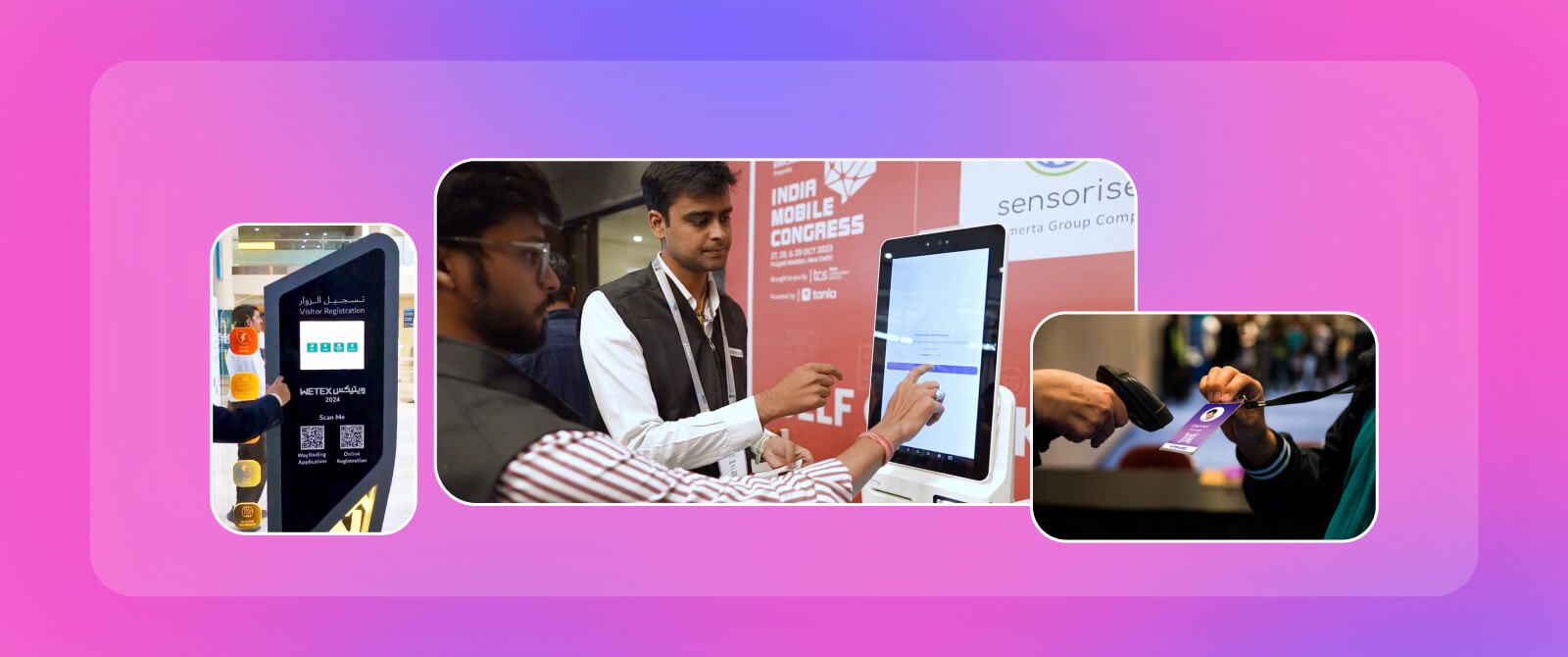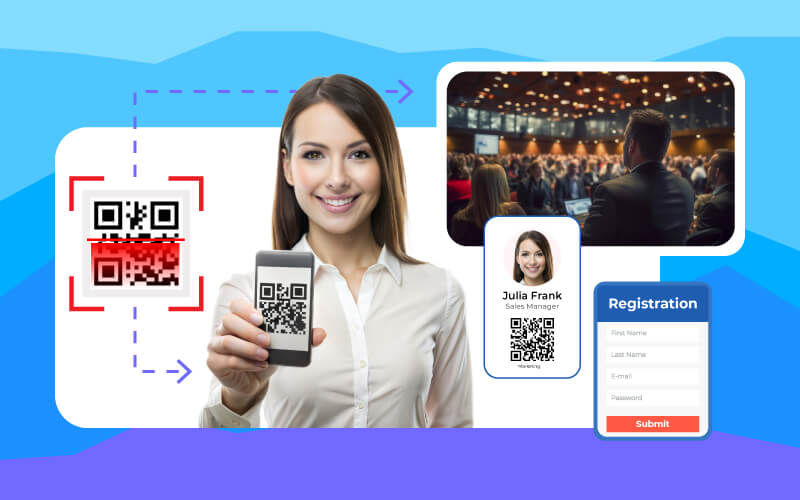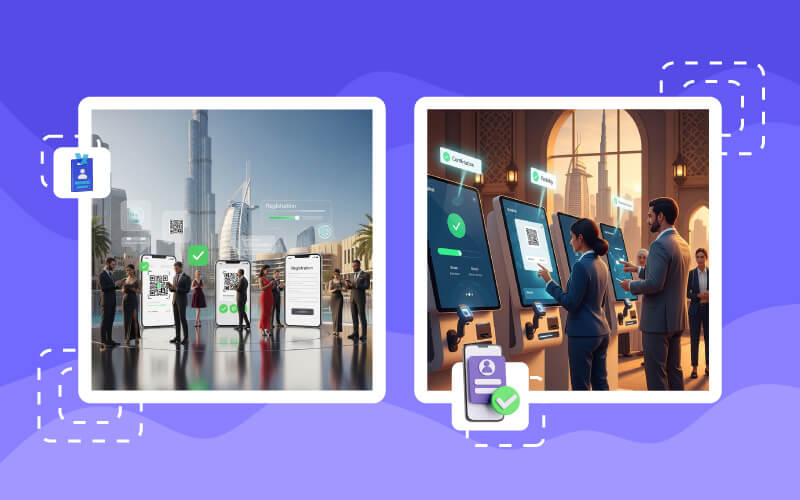Event tech is revolutionizing the event experience and how attendees check in plays a significant role in creating a happy experience. Therefore, the rise of contactless event check-in solutions has become one of the important trends because of the convenience it comes with.
This article explores the growth of contactless check-in, its advantages, the technologies powering it, and its impact on both event organizers and attendees.
What is Contactless Event Check-In?
Contactless check-in is an access method in which attendees enter events without any physical interaction or close contact with the staff on site. Such methods range from QR codes, RFID (Radio Frequency Identification), and facial recognition to mobile apps that guarantee easy entrance through contactless event check-ins.
All visitors only have to scan a digital code or, in some venues, carry an RFID wristband that promptly allows them entry. This speeds up contactless event check-ins as well as reduces the health risks by reducing touchpoints at the entryways.
Key Technologies Behind Touchless Check-In Solutions at Events
Several technologies power modern contactless event check-in solutions, each offering unique benefits:
1. QR Code Event Check-Ins
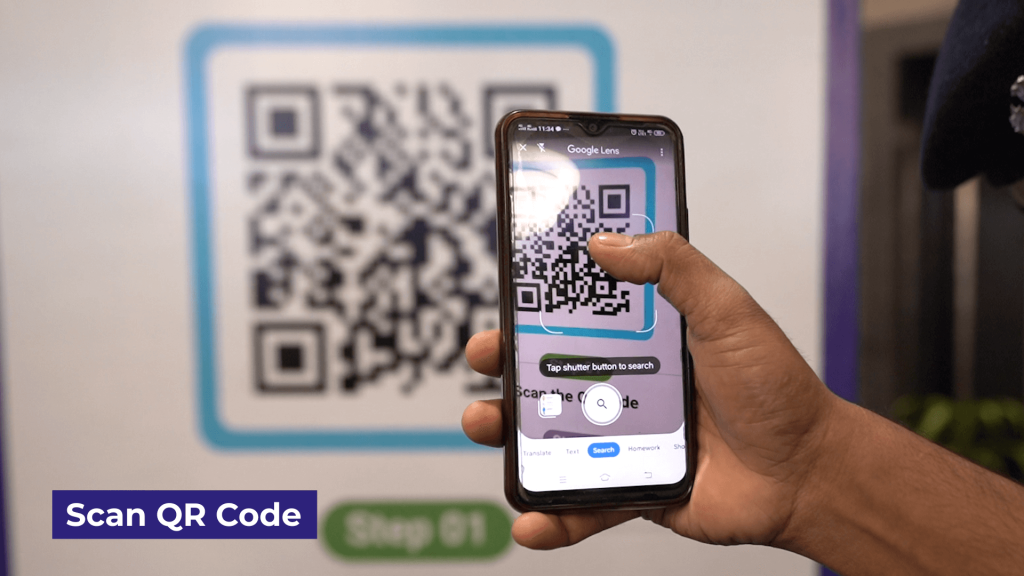
The ease of use of the quick response (QR) codes makes them popular for contactless event check-ins. These can be sent through an e-mail or SMS to event attendees to be scanned at the point of entry, linking directly to registration information thus enabling immediate verification.
Since QR codes are inexpensive to create and scan, they are available for any size of event. These can be stored on the participant’s smartphone so that the participant doesn’t need to print out tickets or badges. Learn more about the trends to watch of QR Code in event management.
2. RFID check-in solutions

RFID technology identifies and tracks tags attached to objects automatically using electromagnetic fields. In events, RFID check-in solutions come with wristbands, badges, or cards that attendees receive, providing touchless entry.
Besides check-in, RFID technology offers much more. It allows the management of attendee movement, payment collection (on food and drinks, or merchandise), and security improvement. Real-time data monitoring also opens good opportunities for event analytics and planning.
3. NFC event check-in solutions
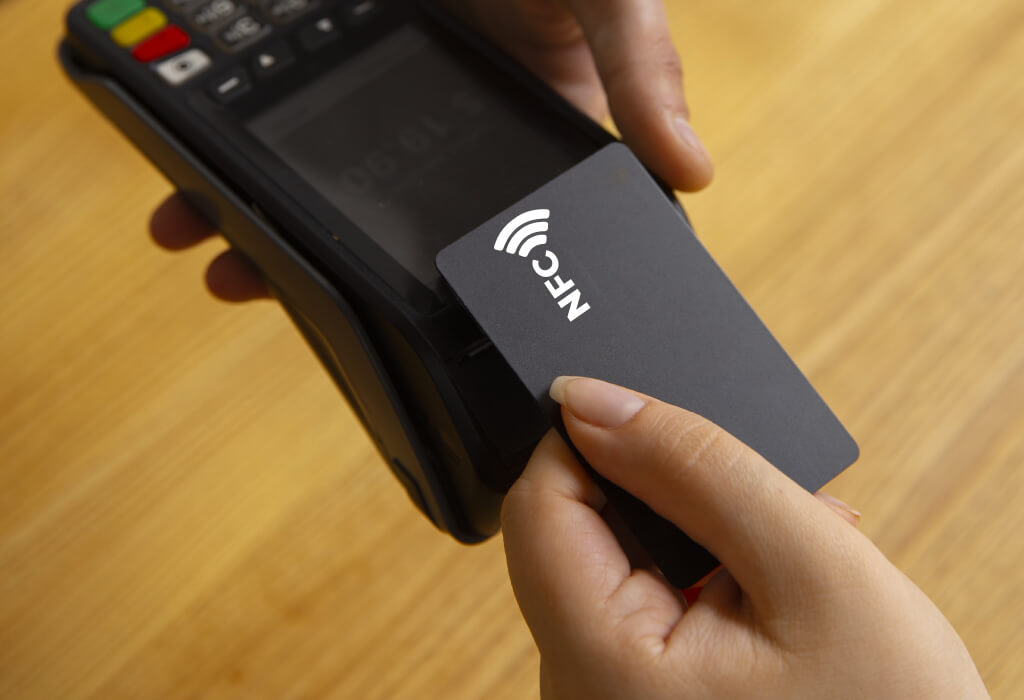
NFC is similar to RFID but operates at more limited ranges, so it is especially suitable for use in mobile devices. Attendees using NFC-enabled devices can simply tap their devices at a terminal or turnstile to gain entry. NFC technology is widely used in contactless payments, and its integration into check-in processes provides a familiar, seamless experience for attendees.
4. Face Recognition check-ins
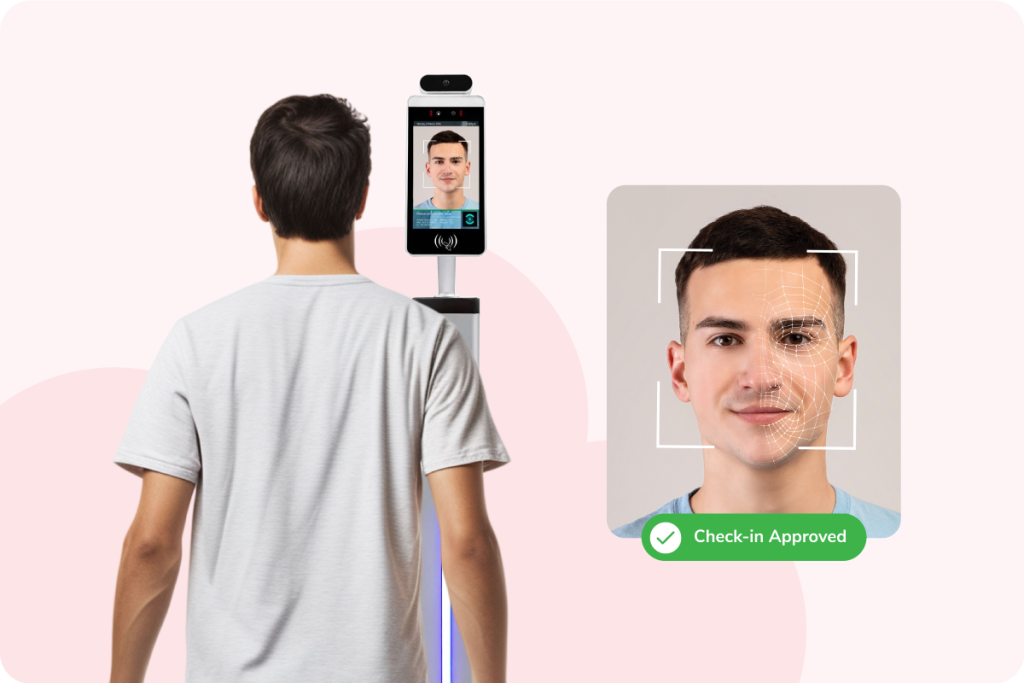
Face recognition check-ins are fast growing for events that wish to carry out their entry systems using a biometric approach. Cameras placed at the entrance scan the attendee’s faces and compare them with a pre-registered database. Once the system recognizes the person, entry is granted.
This method is fast, secure, and touch-free, coming out as a futuristic solution that combines convenience with security. However, event organizers must address transparency and compliance with data protection regulations when it comes to facial recognition.
Learn more: Event Check-In Best Practices Every Organizer Should Embrace
Benefits of Contactless Check-In Solutions for Events
Here are a few benefits of contactless check-in at events:
1. Increased Speed and Efficiency
One of the major advantages of contactless event check-ins is how events speed up check-in times. Because attendees don’t need to look for the assistance of any staff member, the process can be a lot faster. Attendees may come in, scan their QR code tap their RFID wristband, and then enter an event within seconds.
It’s especially helpful for large events where thousands of attendees are entering at one time. It saves attendees from waiting in long queues and entry bottlenecks by facilitating contactless event check-ins to improve traffic flow and enhance the event experience.
2. Enhanced Health and Safety
Hygiene is now a critical factor at live in-person events. Contactless event registration solutions provide the easiest way to reduce physical contact. Therefore, it would be easier for both attendees and staff to ensure that they stay in a safe, socially distanced environment by removing shared touchpoints.
Contactless check-in, therefore, adds an element of security to the event organizers and showcases that the organizers are devoted to attendees’ safety. Thus, it helps in building trust and confidence in the event’s ability to keep the public’s health safe.
3. Improved Data Collection and Analytics

Contactless systems provide organizers with very relevant, real-time data. It automatically captures the entry and exit times of the attendees to enable organizers to monitor attendance and analyze crowd patterns. This data can be used to optimize future events, from adjusting the number of staff to improving traffic flow, and scheduling.
With RFID-based systems, organizers can track attendee movement inside the venue to gain insights into popular areas and engagement levels. This data can inform decision-making for sponsors, exhibitors, and vendors, leading to more tailored and effective event experiences.
4. Enhanced Security and Fraud Prevention
The use of digital and biometric technology in contactless check-in lowers the possibility of ticket fraud or unauthorized entry. Digital technologies like QR codes and RFID wristbands are very hard to counterfeit or steal compared to other traditional tickets. Facial recognition adds another layer of identity verification.
In high-security events, digital credentials or biometric data used in authenticating entry by registered participants ensure that only registered participants gain access, thereby eliminating the risk of counterfeit tickets.
5. Cost Savings and Sustainability
Using contactless check-in solutions saves costs for event organizers. This is mainly achieved by cutting down on printed materials such as tickets and badges and streamlining staffing requirements to make event operations efficient.
Moreover, eliminating paper-based check-in methods supports sustainability efforts. The guests no longer print out tickets, and it helps organizers reduce their carbon footprint by using digital alternatives.
6. Scalability for Large Events
The more the number of attendees that an event involves, the less viable traditional check-in methods become. Contactless check-in solutions embrace huge crowds without making events obtain slow, inaccurate results. Regardless of whether an organizer has a conference with 500 guests or a music festival with 50,000 attendees, these systems adjust according to varying event sizes and formats.
Looking to the Future: Trends in Contactless Event Check-Ins
The rise of contactless check-in solutions shows no signs of slowing down, and several emerging trends suggest that this technology will continue to evolve in exciting ways.
1. Integration with Cashless Payments
Events have been using RFID and NFC technology to achieve contactless check-in and payments without the need to carry physical money and credit cards for purchases. This dual functionality becomes highly extensive in order to streamline both entry and transactions within the event.
2. Hybrid Events and Virtual Check-In
As hybrid events become more common, contactless check-in will expand beyond physical spaces. Virtual attendees will also benefit from seamless digital check-ins, gaining access to online platforms and exclusive content.
3. Face Recognition and Biometric Advancements
Biometric technologies and Face Recognition will be more integrated into check-in systems to enhance security and personalization. These advancements will allow for even faster, more secure entry processes.
In a Nutshell
Contactless event check-ins have changed the way attendants experience an event, offering fast, secure, and efficient entry processes. Technologies like QR codes, RFID, NFC, and facial recognition will make event check-in even more innovative and integrated. As the event industry continues embracing these contactless event check-in kiosks, the check-in process will become smooth to enhance the overall experience of both organizers and attendees at an event.
Contactless event check-in kiosks for fast check-ins are here to stay whether it is a conference, festival, or sporting event. They are the avenues by which future events are going to be defined by efficiency, safety, and convenience.
FAQs
1. How does contactless event check-in improve event efficiency?
Contactless event check-ins speed up the entry process by eliminating manual ticket scanning or name checks. Attendees can simply scan a QR code, tap an RFID wristband, or use facial recognition, which allows for immediate access, reducing wait times and lines.
2. Can contactless check-in systems handle large events?
Yes, contactless check-in solutions are highly scalable and can handle large crowds efficiently. Technologies like QR code event check-in, self-registration kiosks, and RFID check-in solutions are particularly useful for managing high-volume events. These events can be festivals, conferences, or sporting events, without causing bottlenecks or long wait times.
3. Can contactless check-in be integrated with other event technologies?
Yes, touchless check-in solutions can be integrated with other event technologies, such as mobile apps, or cashless payment systems. This allows for a unified experience where attendees can check-in, make purchases, and access event information through a single platform.



